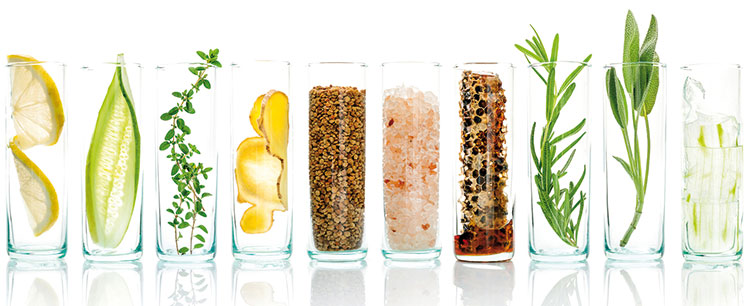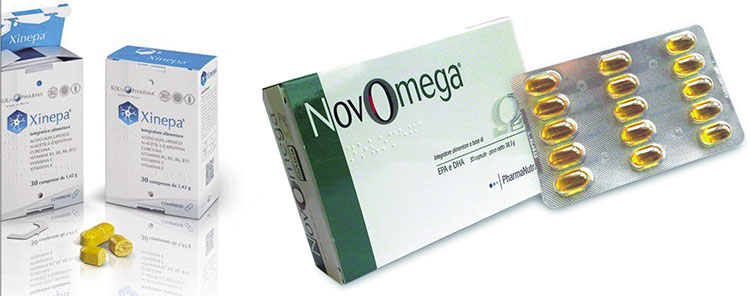Nutraceutical products: market and packaging
The subject of this analysis are two specific categories of nutraceuticals, ie enriched foods and supplements, for which we give an in depth analysis of their market positioning and the types of packaging adopted.

What is meant by Nutraceuticals? We take again the definition from the art.1) of the Sinut (Italian Society of Nutraceutics) Statute:
«... a new discipline in great development worldwide, which studies the bioactive components of plants, animals, minerals and microorganisms, which are used in functional foods, dietary supplements or specific diets. Nutraceuticals determine beneficial health effects, especially for the prevention and treatment of chronic diseases. These effects must be rigorously demonstrated with appropriate experimental and clinical studies “.
The term nutraceutical, coined by Stephen De Felice in 1989, derives from “nutrition” and “pharmaceutical” and therefore refers to the study of nutrient principles, which have beneficial effects on health: Extracted and synthesized, they are used to produce food supplements, and are hence defined nutraceutical products. The category includes probiotics, antioxidants, polyunsaturated fatty acids (omega-3, omega-6), vitamins and enzymatic complexes.
The nutraceutical products can be taken either as a “naturally nutraceutical food” or “enriched food” by a specific active ingredient (for example, milk supplemented with vitamin D or omega-3 acids). The formulations can be liquid, tablets or capsules.
The situation in Italy
Italians are more and more attentive to nutrition and health and, for this reason, the use of nutraceutical products is experiencing an exponential growth, year after year, so much so that Italy is among the first in Europe in terms of consumption.
According to the latest analysis prepared by Ims Health Italia, in 2017 nutraceuticals for a value of more than 3.1 billion euros were purchased, of which about 86% sold through the pharmacy channel, followed by parapharmacies and largescale retail.
In quantitative terms, these values, still covering 2017, translate into over 240 million packs divided into different types of products.
To be highlighted, for this market area, the importance of online sales that in 2016 (latest data available) reached 170 million pieces. Part of these quantities are constituted by total packs sold in Italy from pharmacies and parapharmacies, sold though through their websites and not in stores. A percentage of purchases comes from other non-regularly monitored channels (portals, web services, etc.).
In the last three years, the sector has seen a growth trend above the average of the pharmaceutical market in general.
Consumption, especially in Italy, has evolved so positively as to be an important compensatory factor for the world of pharmacies which, on the contrary, has featured something of a downturn due to the contraction of prices.
The positive trend in consumption of nutraceutical products – that has doubled over the last eight years - is certainly supported by the continuous process of innovation to which they are subjected. Each year the turnover grows thanks to the introduction of new products, which subtract market shares from the so-called “historic” products.
In this area, therefore, it is not the traditional but the innovatory aspect that “pays”. in the world of supplements, success comes to the newest product.
Promotion and advertising in this sense play a fundamental role and the more effective they are, the more a product’s consumption is consolidated.
Although positive, the growth rates of the sector have however diminished between 2017 and 2018: according to the data monitored by Federsalus, in 2017, the market for nutraceutical products grew by 5.9% in terms of value and 4.1% in volume compared to 2016. In 2018, however, based on the first calculations, growth rates were reduced, reaching + 3.9% in value and + 2.2% in volume.
 Packaging mix and product categories
Packaging mix and product categories
According to the Italian Institute of Packaging analysis, over 240 million packages of nutraceutical products for the year 2017 are divided according to the following packaging mix.
The most widely used type of packaging (43.9%) is the plastic/aluminium blister for capsules or tablets; followed by plastic bottles or jars (33.9%), glass bottles and jars(16.5%), laminate pouches (4.9%) and aluminum tubes (0.8%).
As you will see in detail, all areas feature blisters and plastic or glass containers (flacons and jars). The rigid aluminium tubes refer only to the product categories related to mineral vitamins, supplements, products for coughs and colds.
The percentages indicated above refer to primary packaging, that is to say in direct contact with the product, to which cardboard cartons (secondary packaging) and closures and labels (accessories) must be added.
Also according to the data processing of the Institute’s database, this market area generates over 11,000 tons of packaging (including closures, accessories and flat cardboard cartons).
The product categories of this sector are defined according to the pathologies the nutraceutical products are aimed counter. Below we examine the percentages of consumption and the types of packaging used.
• The nutraceutical products supporting the digestive system are at the top of the consumption chart and represent 27.2% of the entire sector. In this context, 40% of the nutraceutical products are represented by probiotics.
As far as packaging is concerned, the market is mostly plastic blisters and bottles (76%).
• Vitamins, minerals, food supplements are in second place in terms of packs consumed. The area is very fragmented both for the types of products (simple mineral supplements, associated and combined with vitamins, antioxidants, etc.) and for the personalization of the offer (over 50, women, pregnancy, sports, children, etc.). In this case too over 70% is represented by plastic bottles and jars and blisters.
• The products intended to regulate the circulatory system register an annual growth rate that is among the highest (+ 10.5%). Products devised to regulate cholesterol and to prevent cardiovascular risks particularly show growth. Among the most singular features of this category is the facility to check their effectiveness in the short term, both through blood and instrumental analysis.
In this case, the packaging mix is mainly oriented towards blistered products, which represent 75% of the packs on the market. The remaining 25% is divided between flasks and glass or plastic jars.
• Tonics and stimulants represent the category of historical products of the entire area: stress and fatigue are the most frequent reasons for which they are prescribed.
40% of packs are accounted for by blisters, followed by jars and plastic or glass flasks.
• Urologists and gynecologists rely on supplements to treat infections of the urinary tract and reproductive system, so much so that the sector has seen good growth rates both in terms of volume and turnover in recent years.
As far as the packaging mix is concerned, of plastic/aluminium blisters account for more than 60%.

• The products to treat coughs and colds are part of a sector closely linked to seasonality, where word of mouth, advertising, but also personal tastes influence consumption.
The types of packaging used are mainly plastic, glass and blister bottles.
Summing up
Without a doubt, we are faced with a sector of a certain importance, both from the point of view of the market and as regards packaging.
Of course, the quantities of packaging used in this area each year represent only a very small portion of the “Italian packaging world”, but what is interesting are the growth trends that, even if attenuated in the last two years, remain positive and continue to support consumption related to the entire pharmaceutical sector. Interestingly, in this context, the role of doctors who, when and if possible, tend to prescribe this type of product compared to traditional medicine.
Barbara Iascone
Istituto italiano Imballaggio



















